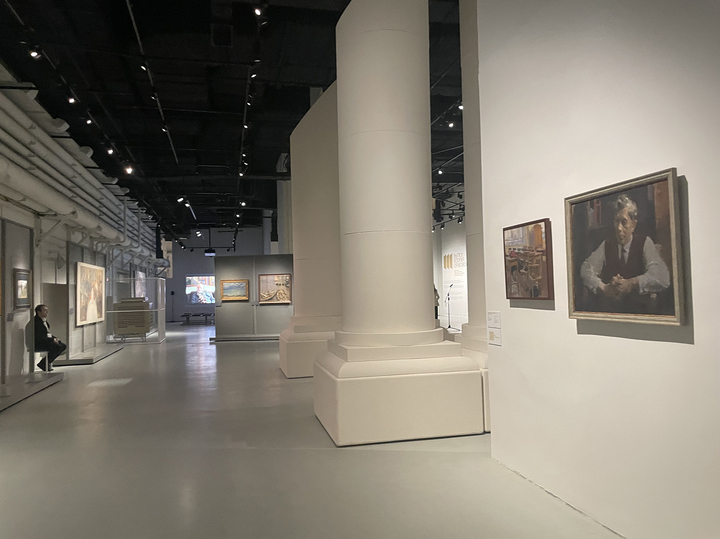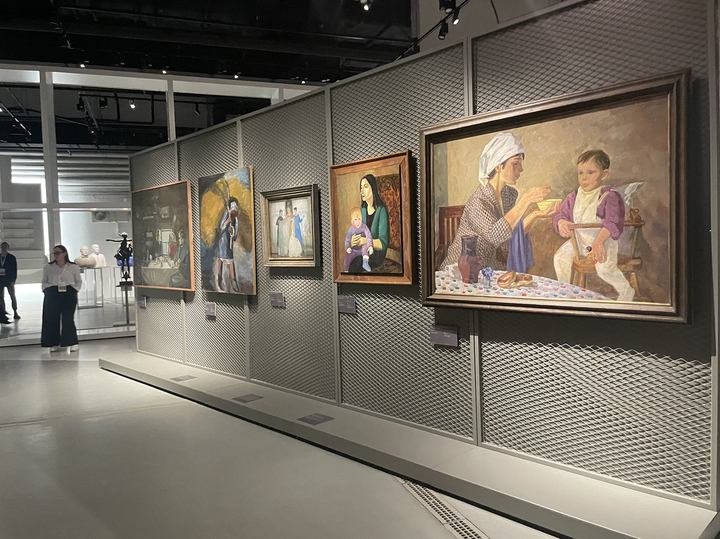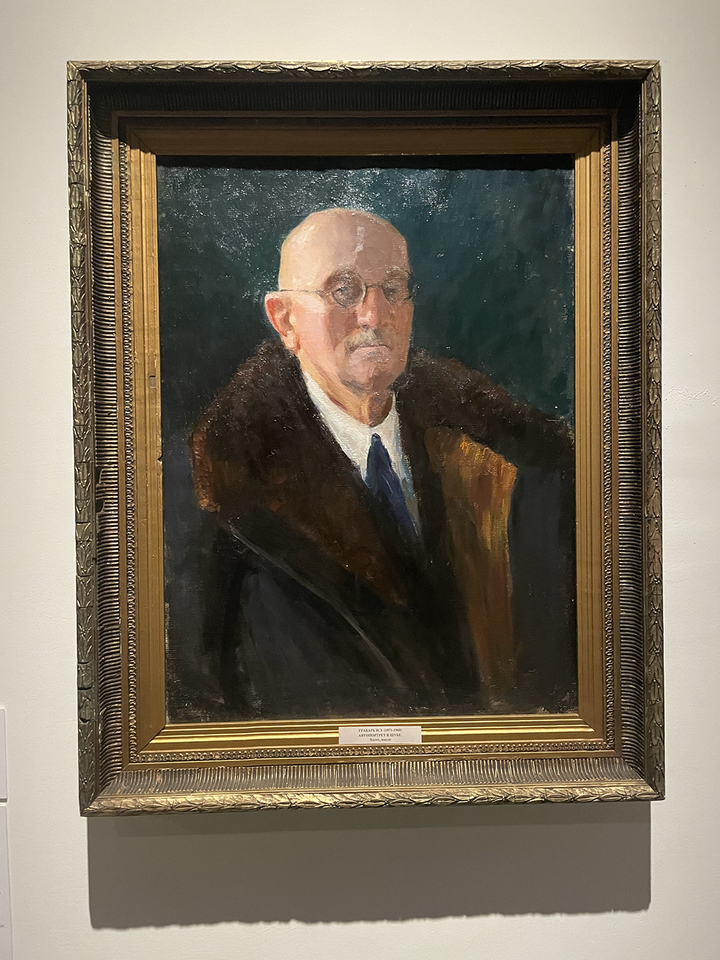Severe style and Bubble Gum: the legacy of the Surikovites was shown from different sides
[ad_1]
Formally, its history began 90 years ago, although in fact the Surikov Institute appeared on the basis of the Moscow School of Painting, Sculpture and Architecture, which originated back in the 1830s as a small creative circle. Today the Moscow State Academic Art Institute named after. IN AND. Surikov (popularly known as Surikovka) – one of the main creative universities in the country – for the first time shows little-known and completely unknown works of its students and teachers for a whole century. Project “Issue. Story. Surikovsky” opens a series of exhibitions that Zaryadye will devote to the legacy of the country’s leading artistic alma maters. “MK” was the first to see unknown masterpieces.
– This is the first exhibition of a new cycle. We have already shown two exhibitions with diploma works from leading Moscow universities, and now we will talk about the centuries-old heritage of art institutes. This is a logical development of the topic. I think that after the Surikov Institute we will show Stroganovka, which next year will celebrate its 200th anniversary,” Dmitry Shishkin, head of the Zaryadye exhibition projects department, tells MK.
The large-scale exhibition project is located in a non-standard art space in the parking lot. The exhibition is divided into two main blocks – painting and sculpture. It included more than 280 works by 198 artists. The earliest was written in 1924, the most recent – an abstraction by Yegor Plotnikov – in 2024. However, most of the works are almost unknown to the general public. The sculptural part is more modest, but it easily makes it clear that the horizon of Surikovka is wide. Here you can find both quite classic bronze busts and very avant-garde ones. At the entrance you are greeted by a competition model for a memorial in Algeria, dedicated to the country’s independence. Pavel Bondarenko, who was the rector of the Surikov Institute and taught sculpture there from 1970 to 1989, made this work in 1963. Before us is a woman, raising her hands and all her being to the sky. Another project won that competition; this model ended up in a private collection, and is known only to specialists.

Not far from the symbol of independence is another image of freedom – well known to many. This is a sculpture of Viktor Tsoi, sitting on a motorcycle, as if on a dashing horse. The diploma work of Alexey Blagovestnov, who studied in Surikovka in the workshop of Alexander Rukavishnikov, was installed near the Oktyabrsky Concert Hall in St. Petersburg only 10 years after its creation. For this sculpture, back in 2004, the author received first prize in the “Sculpture” category at the All-Russian Tretyakov Competition for Young People. Her model adorned the cinema where the premiere of Sergei Solovy’s film “Assa” took place on the eve of its re-release.
The wall behind Tsoi is occupied by large-scale avant-garde structures from the “City of the Future” project. Here you can find the earliest exhibit of the exhibition – an unrealized project by Konstantin Melnikov from 1924 called “Leningradskaya Pravda”. The truth looks like a voluminous suprematist design with relief protrusions. It is effectively illuminated so that the light flows around the sculptural composition, emphasizing its avant-garde form. And one of the most modern items in this section was created in 2021 by Natalia Baranova and is called “The Path to a Woman’s Heart.” Before us is the figure of a girl in a red dress, who carelessly raises her hand up, as if surrendering to the wind. On her robe you can see a ladder, along which small male figures are trying to climb up, but fall down. Sculpture with humor.

The picturesque part is much larger. The entire history of the university is told here, starting with the full-scale class formed in 1832. From it will then grow the Moscow School of Painting, Sculpture and Architecture, which will operate until the revolution, and after that it will close and several educational institutions will grow on its foundation, including the Surikov Institute. Its 90-year history is divided by generation – from the pre-war period to the present day. Especially in the first stage, one feels the continuity, the soft coloring of the Moscow school of painting, going back to Korovin and Arkhipov. At the same time, the exhibition is filled with different, sometimes very contrasting, canvases. For example, next door you can find a restrained, ascetic still life by one of the founders of the “severe style,” Tair Salakhov, and a bright, full of color painting by Zurab Tsereteli, who still teaches at the institute.

There is also a self-portrait of Igor Grabar, who headed the institute when he was forced to resign as director of the Tretyakov Gallery in 1925. The artist led the university during the most difficult years – from 1937 to 1943. In the self-portrait he is wearing a fur coat. The work is not detailed and looks more like a sketch. A similar, only full-length portrait, painted in every detail, that is kept in the Tretyakov Gallery – it was one of the main exhibits of the master’s recent retrospective in the State Tretyakov Gallery. Apparently, this is a preparatory sketch for the famous painting, which no one has seen before.
By the way, it was under Grabar, despite the war, that the university grew and scaled. During the Second World War, the rector ensured that all students and teachers were evacuated to Samarkand and allocated a place in the city center. The exhibition includes several works from the evacuation, depicting a quiet Uzbek courtyard. Students and teachers lived there in very austere conditions, but still had the opportunity to continue working. Such rare works make this exhibition truly valuable for both specialists and the general public.

Here, for example, is the work of Claudia Tutemol, a student of Alexander Deineka. Bright, in the spirit of Malyavin, “The Girl in a Red Sundress” has never left the walls of the Surikov Institute before. The fate of the artist is tragic: she died in 1957 in her fifth year, before finishing her education. What caused the death is unknown; they say it was unhappy love. But since then, generations of students have watched the beauty in a sundress every day. And only now she came out into the world for the first time. This is one of the 15 works that has never been exhibited.
The varied exhibition includes projects by architects, painters, graphic artists, and poster artists. Particular attention is drawn to the works of Miron Lukyanov, who after Alexander Deineka headed the department of graphics. He created posters for Andrei Tarkovsky’s film “Andrei Rublev” and the no less famous “White Sun of the Desert.” He made a revolution in poster graphics.
– The rise of the Soviet poster is associated with his generation. Milon Lukyanov taught with us for many years, he died in 2007,” comments the artist Pavel Pavlinov, head of the department of history and art history, whose graphic works are exhibited just opposite (an interesting company has gathered around: next to Lukyanov’s posters there are also works by Favorsky, who also taught in Surikovka).
“Andrei Rublev is generally very important for the institute,” continues Pavlinov. – All students take a full course in the history of art, and they always talked about Andrei Rublev in detail. Even in difficult Soviet times, when there was a struggle against religion. Despite the bans, this topic lived on. Here is another Rublev – made of plastic (Pavel points to a sculpture in brick and green tones), it was at many exhibitions, it was even in Paris.
– What is the Surikov Institute like today? After all, it has a long academic history; how welcome are modern forms and experiments?
– We combine elements of elitism and democracy. After the second year, students choose a direction – graphics, painting, sculpture, architecture, art history. Within each of the faculties you can choose a specialization and, accordingly, a master. Only stage designers are trained from the first year. In total, more than 800 students are currently studying in six courses. Neither more nor less. The traditions of the Moscow painting school continue here, at the same time there is room for experimentation and imagination.
Which, by the way, is confirmed by the final chords – in the form of an aerial sculpture by Lada Reshchenko called “Bubble Gum” and an abstraction by Yegor Plotnikov.
[ad_2]
Source link






